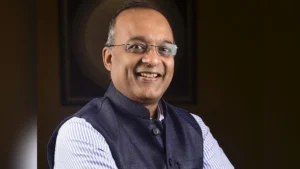Two Brothers, One Bride: Unveiling the Ancient Practice of Polyandry in Himachal’s Hatti Tribe

In a quiet, mountainous village of Shillai in Sirmaur district, Himachal Pradesh, a rare and thought-provoking event unfolded recently—two brothers married the same woman. This wasn’t a joke, a misunderstanding, or a social scandal—it was a well-known and culturally rooted custom known as “Jodidara”, practiced by the Hatti tribe. The incident sparked widespread curiosity across India, raising the question: “Is this even legal?” But for the locals, this was not controversy—it was tradition, and one they’re proud to uphold.

An Age-Old Tradition Resurfaces
The marriage of Sunita Chauhan to Pradeep and Kapil Negi, two real brothers, wasn’t just a personal choice—it was a revival of polyandry, an ancient practice once prevalent in the hilly regions of India, including parts of Himachal Pradesh, Uttarakhand, and even Tibet. Specifically, this form is called fraternal polyandry, where a woman marries multiple brothers from the same family.
This tradition has deep roots in Himalayan society, especially in agrarian tribes, where land was scarce, families were joint, and economic survival was closely tied to unity. Instead of dividing land among sons, the family would unite under one marriage—ensuring land remained undivided and families intact.
What is Jodidara? Understanding the Custom
Locally called Jodidara, or sometimes “Jajda”, this custom is not as rare among the Hatti tribe as outsiders might believe. For generations, it provided a social framework to:
Preserve ancestral property
Maintain joint family systems
Avoid economic fragmentation
Ensure equal responsibilities in child-rearing and agriculture
In Jodidara marriages, the elder brother is often seen as the main husband, but the wife lives with all the brothers, sometimes alternating days or responsibilities. The children belong to the family—not one man—ensuring that the bonds of brotherhood remain strong.
The Couple Speaks: “We Made the Decision Together”
What’s striking is the modern openness with which the trio handled media attention. Sunita, the bride, confidently told reporters that she entered this marriage by choice. She’s aware of the tradition and embraces it. Pradeep and Kapil, the brothers, also stated that it was a collective decision, based on mutual understanding and family unity.
The wedding ceremony took place publicly, with all traditional rituals, music, and celebration. Hundreds attended the three-day event, offering blessings and celebrating what the locals saw as a proud cultural moment—not something to be hidden.

But Is It Legal? Custom vs. Constitution
Here’s where things get interesting.
Under Indian national law, especially the Hindu Marriage Act, 1955 and Section 494 of the IPC, polyandry is technically illegal and unrecognized. India supports monogamy across all recognized legal frameworks.
However, Himachal Pradesh has made room for tribal autonomy. The Hatti tribe, recognized as a Scheduled Tribe in 2022, is governed partially by customary tribal laws—and these customs hold legal weight under state-specific revenue and civil codes. This means that while such marriages aren’t registered under formal Indian law, they are accepted locally, and tribal customs take precedence in civil matters like inheritance, land rights, and family structure.
Why It Still Matters Today
So why would a modern Indian woman choose to marry two brothers in 2025? Why would a community support it?
The answer lies in preserving identity. As modern lifestyles threaten to homogenize ancient ways, many tribal communities are choosing to revive customs that made them unique. For the Hatti tribe, this practice is more than marriage—it’s economic logic, ancestral wisdom, and cultural pride wrapped in one.
In areas where farming remains the main livelihood and land is limited, such customs ensure stability, reduce conflict, and foster collective responsibility—an increasingly rare value in urban nuclear families.
Conclusion: Culture or Controversy?
The story of Sunita, Pradeep, and Kapil challenges mainstream notions of marriage, legality, and modernity. To some, it may sound strange—even uncomfortable. But to others, it is a profound example of how tradition and choice can co-exist, even in today’s India.
As long as consent, respect, and community acceptance remain intact, customs like Jodidara remind us that diversity doesn’t only lie in languages and food—it also lies in how we define relationships, families, and love.






